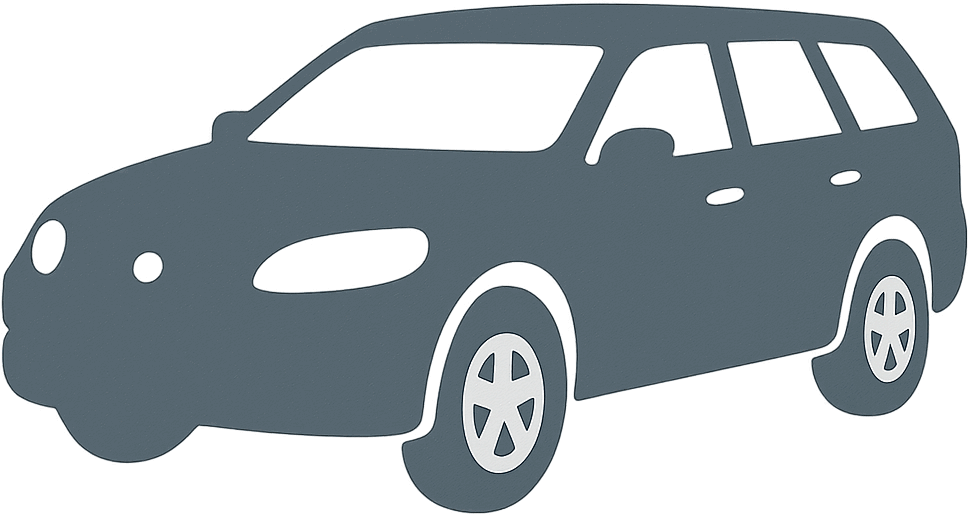 1974 DAF 46 Combi Dimensions, Size & Specs
1974 DAF 46 Combi Dimensions, Size & Specs
The DAF 46 Combi station wagon, produced between 1974 and 1975, is a notable example of compact station wagons from the mid-1970s produced by the Dutch manufacturer DAF. This generation was developed as a practical and versatile family vehicle with a unique charm typical of the brand. Combining compact exterior dimensions with functional interior space, the DAF 46 Combi offered a comfortable driving experience suitable for daily commuting and extended trips alike. While specific dimensional data such as length, width, height, and weight are less frequently documented for this model, its classification as a station wagon signified emphasis on cargo capacity and passenger comfort. Typically, station wagons of this era embraced an efficient design that maximized usable interior volume within a relatively modest footprint, catering well to urban and suburban needs. The DAF 46 Combi is remembered for its simple yet effective engineering, which included DAF's characteristic continuously variable transmission (CVT) in many models, enabling smooth and easy driving. Its vintage design continues to attract enthusiasts and collectors who appreciate classic Dutch automotive craftsmanship. This vehicle serves as an interesting subject when comparing car sizes and configurations from the 1970s, illustrating how European manufacturers balanced compact dimensions and practical utility. With production limited to only two years, the DAF 46 Combi remains a unique and classic station wagon that reflects automotive trends and engineering philosophies of its time.
Discover the standout features that make the 1974 DAF 46 Combi a leader in its class
Have a question? Please check our knowledgebase first.
The DAF 46 Combi station wagon, produced between 1974 and 1975, features compact dimensions typical for small family cars of its era. Although exact dimensions are somewhat scarce due to the vehicle's specialized production, the length is approximately 3590 mm (141.3 inches), width around 1530 mm (60.2 inches), and height near 1410 mm (55.5 inches). These dimensions make the DAF 46 Combi relatively small and easy to maneuver, suitable for urban driving and parking. Its size reflects practical use as a station wagon, balancing passenger space and cargo capacity without compromising agility.
The DAF 46 Combi station wagon offers interior space designed to comfortably seat four passengers with adequate headroom and legroom for its compact size. The cargo capacity is modest, typical for a small station wagon, allowing for sufficient room behind the rear seats for luggage or groceries. Exact cargo volume figures are not widely documented, but the flexible rear seating arrangement permits expanded cargo space when rear seats are folded down. This compromise between passenger comfort and utility was one of the distinguishing features of the DAF 46 Combi during its production years.
The DAF 46 Combi is relatively lightweight for its class, with an approximate curb weight around 830 kg (1,830 lbs). This light weight allowed for efficient fuel consumption and nimble handling, which was a selling point at the time. Compared to other small station wagons from the mid-1970s, such as the Volkswagen Variant or the Ford Escort Estate, the DAF 46 tends to be lighter due to its smaller dimensions and simpler construction. This contributed to its appeal as an economical choice for urban families.
Yes, the DAF 46 Combi station wagon's dimensions make it well-suited to fit comfortably inside a standard European garage. With an approximate length of 3.59 meters (141.3 inches), width of 1.53 meters (60.2 inches), and height of 1.41 meters (55.5 inches), it is smaller than many modern cars and aligns with typical garage sizes, which generally accommodate vehicles up to 5 meters (196.9 inches) long and 2.5 meters (98.4 inches) wide. Owners during the 1970s and today would find it easy to park and store the DAF 46 Combi in residential garages.
Compared to the DAF 44, the direct predecessor, the DAF 46 Combi is slightly larger but remains compact overall. The DAF 44 measured approximately 3.76 meters (148 inches) in length, slightly longer than the DAF 46's approximate 3.59 meters (141.3 inches). Width and height are also quite similar between the two models; however, the DAF 46 often featured a slightly more modern and refined design. Despite its marginally smaller length, the 46 Combi's design optimized interior space better, especially for cargo in the station wagon version, enhancing practicality without increasing the external footprint significantly.
The DAF 46 Combi is generally more compact than many of its contemporaries like the Volkswagen Variant or the Hillman Estate. For instance, the VW Variant was about 4.1 meters (161 inches) in length, considerably larger than the DAF 46's 3.59 meters (141.3 inches). The DAF's narrower width and lower height also made it more maneuverable in tight urban environments. While the cargo capacity might be less than larger wagons, the DAF 46 appealed to buyers looking for a smaller footprint without sacrificing station wagon versatility. Thus, it was an economical and practical alternative in the small car segment of the 1970s.
The DAF 46 Combi's exterior design was characterized by short front and rear overhangs, contributing to its compact total length of around 3.59 meters (141.3 inches). This design enhanced maneuverability and helped maximize interior space relative to overall size. The wheelbase was approximately 2.17 meters (85.4 inches), providing a stable ride and reasonable interior legroom. The station wagon body style added practical roof height and rear cargo space without greatly increasing height, which remained around 1.41 meters (55.5 inches), maintaining a low center of gravity for improved handling.
Thanks to its lightweight construction, roughly 830 kg (1,830 lbs), and compact size, the DAF 46 Combi offered good fuel efficiency by 1970s standards, typically averaging around 6-7 liters per 100 kilometers (approximately 40-47 miles per gallon US). The small engine paired with its reduced mass resulted in adequate acceleration and easy urban drivability. This efficient balance made the DAF 46 Combi appealing to budget-conscious consumers needing economy without sacrificing practical space inherent in the station wagon body style.
The DAF 46 Combi had a relatively limited production span from 1974 to 1975 as part of the DAF 46 model range. Its market reception was modest, with niche appeal among buyers valuing its unique Variomatic continuously variable transmission and compact wagon practicality. Production volumes were low compared to mainstream competitors, partly due to DAF's position as a smaller manufacturer focused on economy cars with innovative mechanical features. While not a blockbuster, the 46 Combi remains noted for its distinctive blend of size, simplicity, and technology in automotive history.
The DAF 46 Combi’s small footprint, compact dimensions, and lightweight design make it particularly well suited for modern urban environments. Its approximate length of 3.59 meters (141.3 inches) and narrow width of 1.53 meters (60.2 inches) allow for easy parking and navigation through tight city streets. While its slower acceleration relative to modern cars might be a factor, the car’s nimble handling and efficient use of space remain relevant advantages. Overall, its size and agility would still be appreciated in contemporary city settings, especially by enthusiasts or collectors interested in its classic design.
